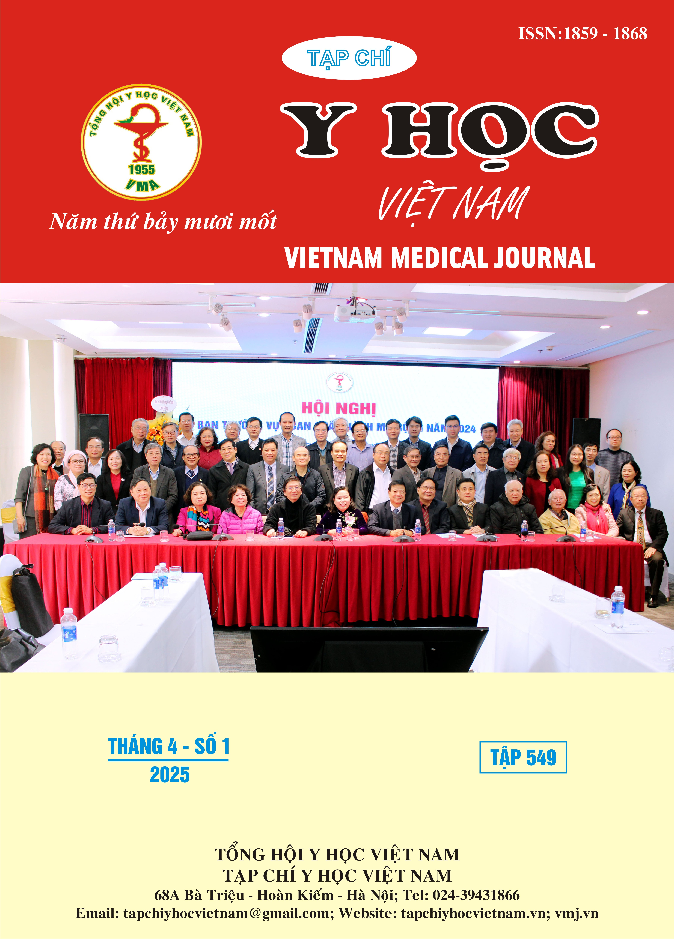EPIDEMIOLOGICAL CHARACTERISTICS AND ETIOLOGY OF ENCEPHALITIS IN CHILDREN AT THE NATIONAL CHILDREN'S
Main Article Content
Abstract
Objective: To describe the epidemiological characteristics and etiology of encephalitis in children at the National Children's Hospital from 2021 to 2022. Methods: A descriptive study with prospective data collection was conducted using a convenience sampling method. Qualitative variables were analyzed using descriptive statistics with SPSS software. Results: During the study period, 635 patients met the inclusion criteria. The median age was 52.17 months (ranging from 4 days to 16 years old), and 55.6% of the patients were male. Cases were recorded throughout the year, but the number of hospitalizations increased during the summer. The etiology was identified in 80.9% of cases, with definitive causes in 46.5% and probable causes in 34.5%. Viruses were the most common cause (41.4%), with Japanese encephalitis virus being the predominant pathogen. Autoimmune encephalitis accounted for 36.4%, while bacterial causes accounted for 19.5%, with Streptococcus pneumoniae (45.6%) being the most common bacterium. Conclusion: Encephalitis occurs year-round, affecting children of all ages, but it is most common in children under 5 years old. Cases were reported in various provinces and ethnic groups. Although the proportion of autoimmune encephalitis has increased significantly compared to previous studies, infectious causes still predominate.
Article Details
Keywords
encephalitis, children, etiology, autoimmune encephalitis
References
2. George BP, Schneider EB, Venkatesan A. Encephalitis Hospitalization Rates and Inpatient Mortality in the United States, 2000-2010. Chaturvedi V, ed. PLoS ONE. 2014;9(9):e104169. doi:10.1371/journal.pone.0104169
3. Duffy MR, Yen NT, Hills SL, Fischer M, Hien NT, Hong NM. Surveillance for Japanese Encephalitis in Vietnam, 1998–2007. The American Journal of Tropical Medicine and Hygiene. 2010;83(4):816-819. doi:10.4269/ajtmh. 2010.10-0262
4. Koskiniemi M, Rautonen J, Lehtokoski-Lehtiniemi E, Vaheri A. Epidemiology of encephalitis in children: A 20-Year survey. Ann Neurol. 1991;29(5):492-497. doi:10.1002/ana. 410290508
5. Iro MA, Sadarangani M, Goldacre R, Nickless A, Pollard AJ, Goldacre MJ. 30-year trends in admission rates for encephalitis in children in England and effect of improved diagnostics and measles-mumps-rubella vaccination: a population-based observational study. Lancet Infect Dis. 2017;17(4):422-430. doi:10.1016/S1473-3099(17)30114-7
6. Pommier JD, Gorman C, Crabol Y, et al. Childhood encephalitis in the Greater Mekong region (the SouthEast Asia Encephalitis Project): a multicentre prospective study. The Lancet Global Health. 2022;10(7): e989-e1002. doi:10.1016/ S2214-109X(22)00174-7
7. Gable MS, Sheriff H, Dalmau J, Tilley DH, Glaser CA. The Frequency of Autoimmune N-Methyl-D-Aspartate Receptor Encephalitis Surpasses That of Individual Viral Etiologies in Young Individuals Enrolled in the California Encephalitis Project. Clin Infect Dis. 2012;54(7): 899-904. doi:10.1093/cid/cir1038
8. Trần Thị Hạnh Chân, Nguyễn Thị Thanh Tuyền, Nguyễn Hữu Châu Đức. Nghiên cứu đặc điểm lâm sàng, cận lâm sàng và các yếu tố liên quan đến kết quả điều trị bệnh viêm não ở trẻ em tại Trung tâm Nhi khoa Bệnh viện Trung ương Huế. Tạp chí Nhi khoa. 2024;17(1):24-32.
9. Trần Thị Thu Hương, Phạm Nhật An. Căn nguyên viêm não cấp ở trẻ em tại Bệnh viện Nhi Trung ương. Tạp chí phòng chống bệnh sốt rét và các bệnh ký sinh trùng. 2018;106(4):93-96.
10. Nguyễn Ngọc Rạng, Dương Thanh Long. Nguyên nhân và đặc điểm lâm sàng bệnh viêm não ở trẻ em tại tỉnh An Giang. Tạp chí Y học Việt Nam. 2021;498(1). doi:10.51298/vmj.v498i1.118


